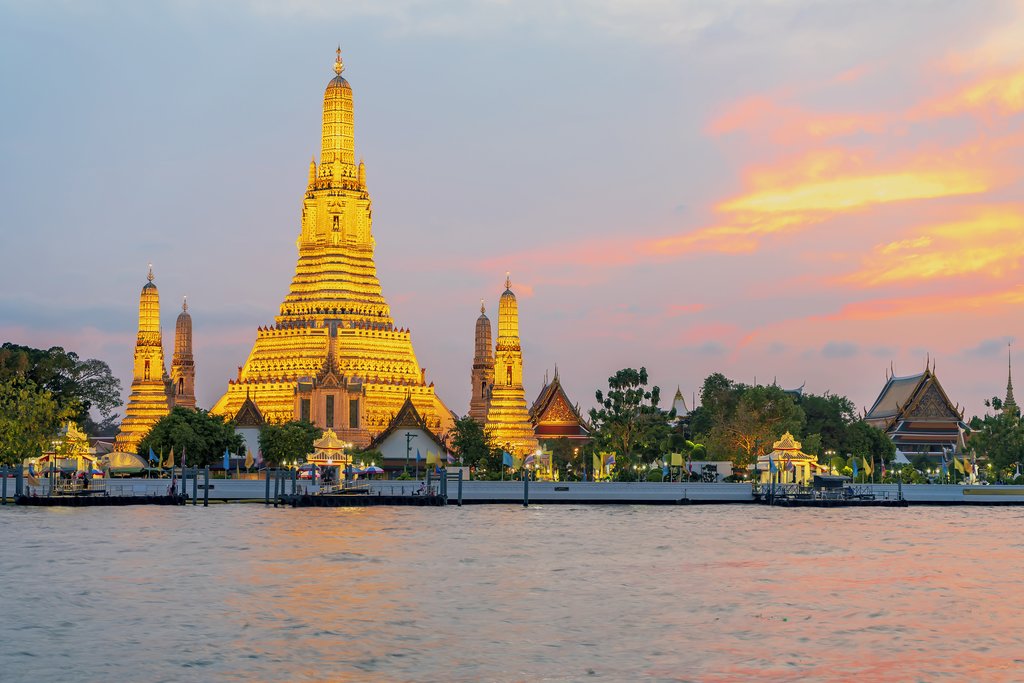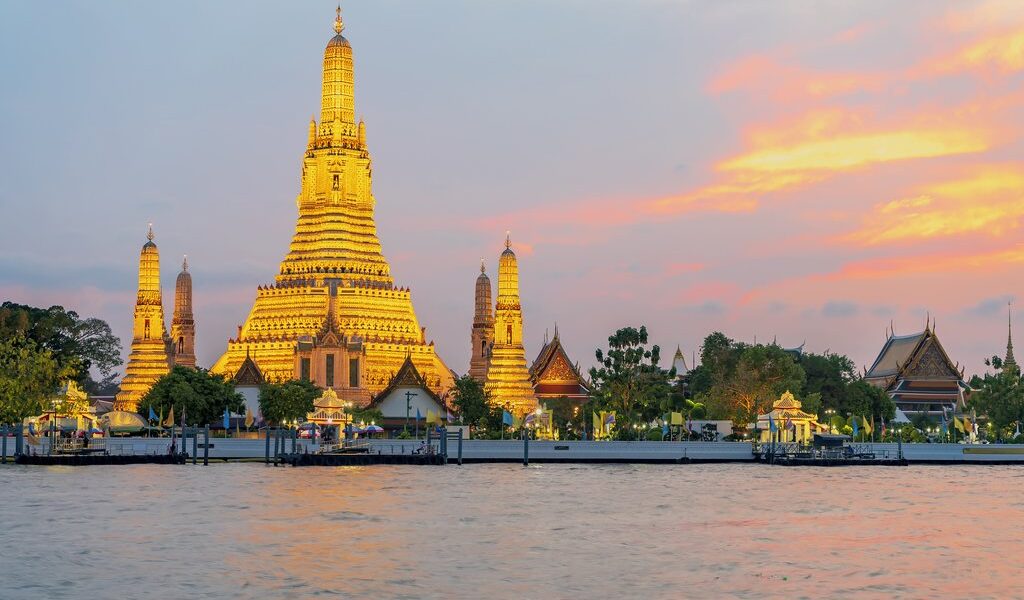
July can be a good time to visit Thailand, but you’ll need to be prepared for rain. It’s the middle of the wet season and most of the country experiences significant showers and thunderstorms from the southwest monsoons. The plus side is that the crowds are negligible and the prices are reduced. As a bonus, the rain makes the countryside lushly picturesque, and also creates perfect conditions for harvesting durian fruit.
Thailand in July: A Comprehensive Travel Guide
## Weather in Thailand During July
If you’re planning a trip to Thailand in July, it’s important to be aware of the weather conditions. Unlike some destinations where you can reliably expect sunshine, Thailand in June presents a bit of a mixed bag. You won’t find many places that are completely free of rain during this month. Indeed, most regions experience significant rainfall, often in the form of turbulent afternoon downpours. These downpours are frequently accompanied by thunder and lightning, creating dramatic, albeit sometimes disruptive, weather events.
The heavy rainfall can lead to complications. Roads may wash out in certain areas, and on occasion, some regions might even require evacuation due to flooding. However, it’s important to maintain perspective. For the most part, the major tourist attractions remain accessible and pleasant, particularly during the mornings and at scattered intervals throughout the day. The rain tends to be concentrated in the afternoons, leaving the mornings relatively clear for exploration and sightseeing.
If you’re the kind of traveler who doesn’t mind a bit of rain, July can be a fantastic time to visit Thailand. The crowds are significantly smaller compared to the peak tourist seasons, allowing you to experience the country’s attractions with more space and tranquility. You’ll be able to explore temples, markets, and natural wonders without battling hordes of other tourists, creating a more intimate and authentic travel experience.
The northern part of Thailand and the southern west coast beaches tend to receive the most rainfall during July. Cities like Chiang Mai experience an average of about 18 wet days per month. Similarly, the coastal areas along the Andaman Sea, including Phuket and the surrounding islands, also see a high frequency of rainy days, typically around 16 to 17. These areas are particularly susceptible to heavy downpours and potential flooding.
In contrast, the areas around Ko Samui and Hua Hin, which are situated on the Gulf of Thailand, generally experience drier conditions during July. While you can still expect some rainfall, it tends to be less frequent and less intense compared to the Andaman Sea coast. This makes these areas a potentially better choice if you’re seeking a beach vacation with a lower risk of getting rained out.
Regardless of where you travel in Thailand during July, you can expect hot temperatures. Average lows hover around 75 degrees Fahrenheit (approximately 24 degrees Celsius) at night, providing warm evenings. Daytime highs typically reach around 90 degrees Fahrenheit (approximately 32 degrees Celsius), creating a tropical and humid climate. It’s essential to pack light, breathable clothing and stay hydrated to cope with the heat.
## Crowds and Costs in Thailand During July
One of the most appealing aspects of visiting Thailand in July is the significant decrease in crowds. The peak tourist season has ended, and many travelers are deterred by the prospect of rain, resulting in a more relaxed and less congested atmosphere throughout the country.
While some popular destinations like Bangkok and Chiang Mai remain relatively busy due to their year-round appeal, the coastal areas experience a noticeable drop in tourist numbers. Many of the lesser-traveled parts of northern Thailand, such as Pai and Mae Hong Son, also see a significant reduction in crowds, offering a more secluded and authentic travel experience.
July is also an excellent time to visit Thailand if you’re looking to save money. Hotels often offer substantial discounts during the low season, sometimes reducing their rates by as much as half. This can make your trip significantly more affordable, allowing you to stretch your budget further and enjoy more experiences.
While the cost of food and drinks generally remains consistent throughout the year, you can often find discounted tours and activities during July. Tour operators are eager to attract customers during the low season and may offer special promotions to entice travelers. This is a great opportunity to take advantage of guided tours and explore the country’s attractions at a lower price.
## Where to Go in Thailand During July
Bangkok can be an excellent choice for a July visit. Many of the city’s attractions are located indoors, providing shelter from the rain. You can explore magnificent temples, browse air-conditioned shopping malls, and visit world-class museums without worrying about getting soaked. Furthermore, the central region of Thailand tends to receive less rainfall than other parts of the country, with an average of only 13 rainy days per month. This means that more than half of the month is completely dry, providing ample opportunity for outdoor exploration. July is an ideal time to immerse yourself in Bangkok’s renowned food scene, sampling delicious street food and dining at upscale restaurants. You can also explore the city’s ornate temples and palaces, marveling at their architectural grandeur and cultural significance.
Chiang Mai, Chiang Rai, and Pai, all located in northern Thailand, experience higher rainfall during July, which tends to deter many tourists. However, if you’re not overly concerned about occasional showers, this can actually be one of the most beautiful times of year to visit this region. The rain transforms the landscape into a lush, green paradise, and many tropical fruits, such as durian and mangosteen, are in season.
July is a wonderful time to embark on treks through the mountains or hikes through the canyons surrounding Chiang Mai. The trails are less crowded, and the scenery is particularly vibrant after the rain. Just be sure to pack high-quality rain gear and have alternative plans in case you get caught in a major storm.
The beaches on the Gulf of Thailand can also be good options during July, provided that you’re prepared for some afternoon rain showers. The sun typically shines between showers, and the weather remains warm and pleasant. This creates perfect beach-going conditions with the added benefit of fewer crowds. However, it’s advisable to stick to the east coast of the Gulf of Thailand, as the western Andaman side tends to be wetter and more prone to flooding and washed-out roads.
## What to Do in Thailand During July
If you’re visiting Bangkok, a trip to the famous Grand Palace is a must. This major tourist attraction was once the residence of Thai kings and features a sprawling complex of pavilions and gardens. Wat Pho (the “Temple of the Reclining Buddha”) is another popular attraction, housing a giant reclining Buddha that measures 50 feet tall and 150 feet long. After exploring these historical sites, you can enjoy dinner in the trendy Thonglor or Sathorn neighborhoods or catch a performance at the historic Scala Theater.
In northern Thailand, consider visiting the rescued elephants at the Elephant Valley Thailand sanctuary in Chiang Rai. Here, you can observe these magnificent creatures roaming freely in a natural habitat or even assist their mahouts with bathing them. In Chiang Mai, be sure to visit the Night Bazaar to shop for handmade souvenirs or take a trip to the mountaintop Doi Suthep temple, offering panoramic views of the surrounding landscape. Outside of Pai, don’t miss the scenic Pam Bok Waterfall, a hidden gem surrounded by lush vegetation.
For beach lovers, Ko Samui is a great alternative to Phuket during July. Here, you can indulge in snorkeling, scuba diving, surfing, or swimming in the crystal-clear waters. July is an especially ideal time for sea kayaking through the mangroves, as they are particularly lush and green after the rainfall. If the rains do come down, you can take a cooking class to learn how to prepare delicious Thai dishes or treat yourself to a relaxing massage.
## Events in Thailand During July
Asalha Puja: This sacred Buddhist holiday, also known as Asanha Bucha, takes place on the full moon day of the eighth lunar month, which usually falls in early July. The public holiday commemorates the Buddha’s first sermon and marks the beginning of the three-month Buddhist Lent.
Khao Phansaa: The day after Asalha Puja, the period of Khao Phansaa commences, also known as Buddhist Lent. Throughout the country, elaborate candle processions are held to kick off the event, with devotees donating wax candles to the monks and creating intricate sculptures.
His Majesty the King’s Birthday: On July 28, the Thai people celebrate the birthday of their current leader, His Majesty King Vajiralongkorn. This public holiday sees offices and government buildings close in honor of the special occasion. King Vajiralongkorn ascended to the throne in 2016 following the death of his father, King Bhumibol Adulyadej, whose birthday on December 5 remains a public holiday as well in remembrance of the former leader.
## Traveling to Thailand in July? Consider this Itinerary
The Family Adventure in Chiang Mai – 7 Days tour is a great option. This seven-day tour avoids the rainy beaches of Phuket and the Andaman Sea, focusing instead on the Chiang Mai region, making it ideal for a July visit. Highlights include a hike up Doi Suthep Mountain, a cycling trip to the Baan Tawai craft village, and a kayaking excursion in Si Lanna National Park.
This revised version contains more than 1008 words and retains all place names. All website URLs have been removed.
B-2592

